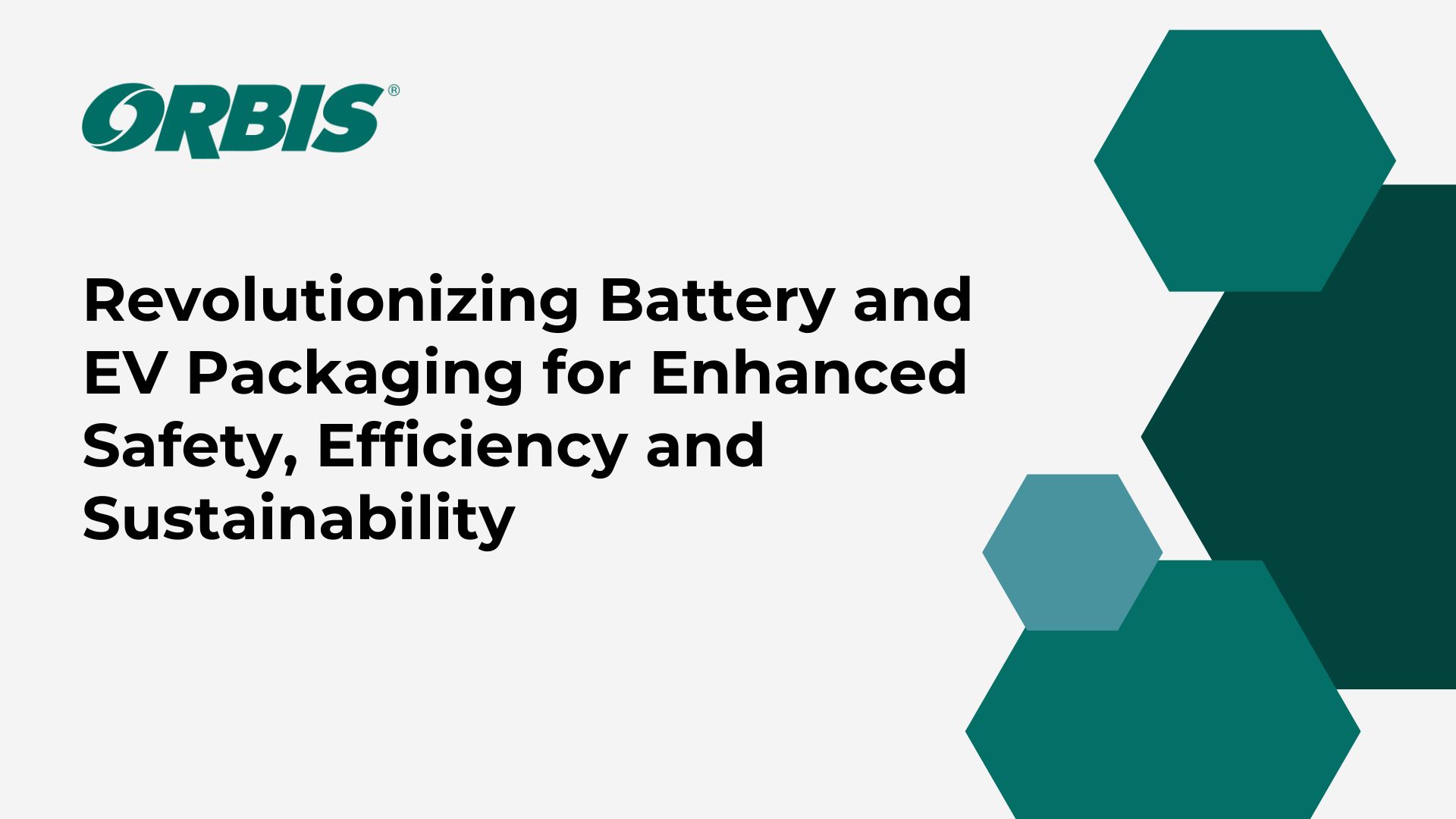Rubber meets the road with this statistic: Electric vehicles (EVs) will account for 29.5% of new car sales by 2030, according to EVAdoption.com.
Indeed, electric vehicles are gaining popularity. In the fast-paced world of EVs and cutting-edge battery technology, packaging plays a pivotal role in ensuring not only safety and efficiency but also sustainability. From the supply chain to the road, every aspect of the EV and battery supply chain is undergoing a transformation, and packaging is no exception. Reusable packaging solutions are leading the charge toward a more sustainable future for battery and EV packaging. These solutions not only reduce waste but also enhance the overall sustainability of the entire packaging process, making a significant impact in an industry that’s focused on cleaner and greener transportation solutions.
As more EVs hit the road, we continue to observe trends impacting their widespread adoption, those being: charging infrastructure, government regulations, sustainability and technology. As EVs continue to reshape the automotive industry, how can warehouse managers promote safety, efficiency and sustainability through smarter packaging material?
Packaging Solutions Reshaping Battery and EV packaging.
The value of an EVs battery makes up almost 30% to 40% of the vehicle’s value. Lithium-ion batteries (LIBs) are classified as a Class 9 dangerous good, meaning the item/substance when transported can pose a risk to health, safety, property or the environment. With this, due to the rise in EV production, battery shippers are under more enforcement scrutiny than ever before. Utilizing compliant packaging that protects the battery during transport is crucial. Timely developments in cutting-edge packaging materials and protective designs are helping ensure improved safety standards and optimizing the supply chain.
For Greater Sustainability, Look to Reusable EV Battery Packaging
Driving the consumer interest in EVs is no doubt the reduction of environmental impact from their purchase decision – among a number of other factors. This emphasis on sustainability extends all the way through to packaging choices. The environmental conscious production of EVs is important to consumers. Considering that an estimated 75% of consumers expect businesses to support efforts to stop climate change, reusable plastic packaging is the answer to helping companies add sustainability to their supply chain while reducing costs and enhancing profitability.
Reusable packaging lasts many more cycles in comparison to their more traditional counterparts. Reusable, plastic pallets offer extended use with 200 cycles (and 71% reduced energy usage) when compared to its traditional wood counterpart that lasts only 11 cycles.
Reusable packaging material can, at the end of its cycle, be recycled and reprocessed into new use.
Five Additional Benefits of Reusable Packaging for EVs:
1. Reduces transportation costs
With costly transportation and production of EVs, finding freight efficiencies through packaging is imperative for outbound part shipment. For example, an automotive supplier reduced freight cost by more than 70% in converting from a non-collapsible steel bin into a collapsible plastic bulk container. Savings were generated through lighter tare weight of the packaging and better cube utilization in collapsible, empty return shipments.
2. Protects sensitive parts
Concerns about electrostatic discharge (ESD) damage to the high-tech interior of these vehicles is driving new packaging needs. ESD-safe protective packaging shields materials that come into contact with static electricity during handling, shipping and storage.
3. More effective fleet management
With the high cost of EVs, managers will want to avoid excessive inventories and overhead costs. Dwell time is decreased through effective packaging management and track-and-trace technologies – ensuring packaging is readily available.
4. Support for automation and robotics
In 2025, half of all work tasks will be handled by machines, according to the World Economic Forum. Through automation, automakers can leverage improved production flexibility. Packaging and automation go hand-in-hand, as the uniform design of reusable plastic packaging solutions seamlessly interface with automated systems, reducing system downtime found with inconsistent packaging design. Considering each OEM or battery provider have different packing expectations, automation is key.
5. Customizable packaging solutions
Reusable packaging is customizable to specifically fit the battery itself, helping to prevent shifting during transport. ORBIS has been involved in a number of battery projects and can provide valuable perspective.
The Future of Battery and EV Packaging
At the rate the battery industry is evolving, EV batteries could look entirely different in a few years. It is important to keep up with further evolutions and the pace of the supply chain. Already, the industry is looking to batteries outside of lithium-ion, and we continue to see a bigger push on packaging for the entire lifecycle, not just initial battery production to the auto plant.
It’s important to work with a packaging supplier that has extensive knowledge of the dangerous goods packaging regulations and is accredited with global certifications to provide large-format LIB packaging solutions.
